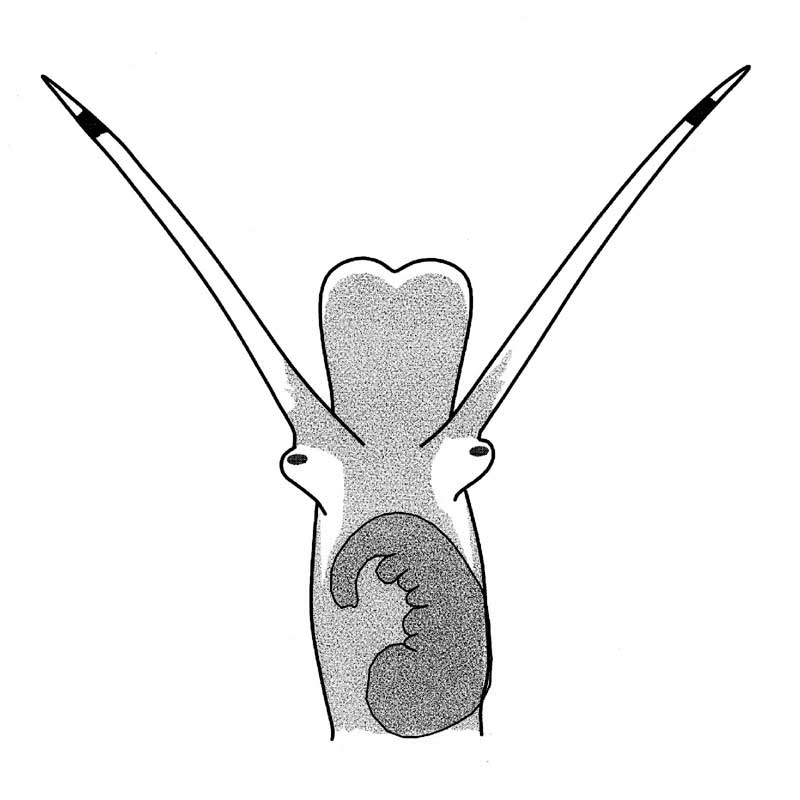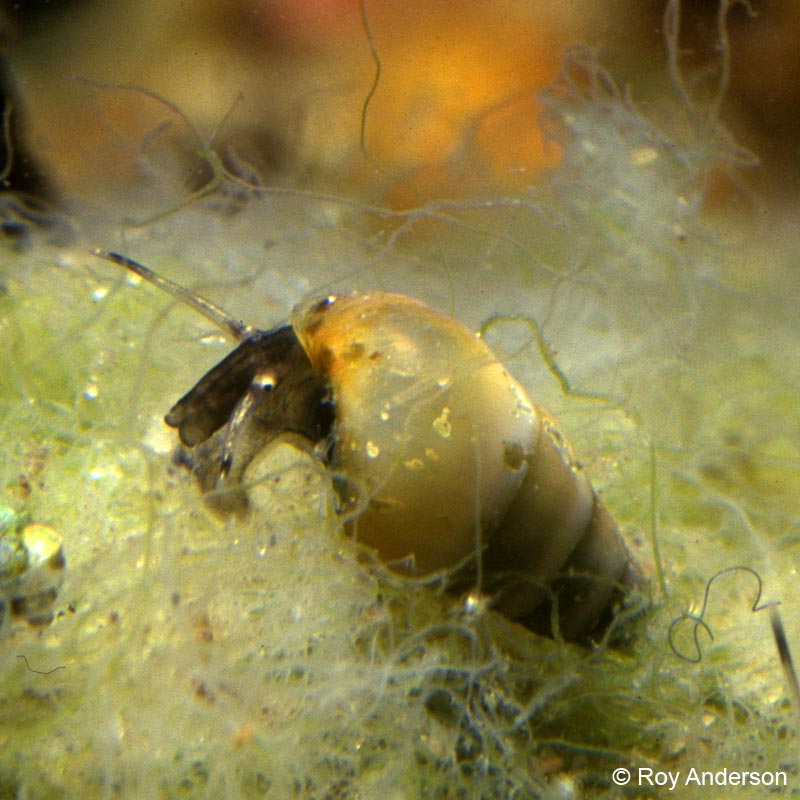| Mollusca : Gastropoda : Littorinimorpha : Hydrobiidae | Snails and slugs |
Peringia ulvae (Pennant, 1777)
Laver spire shell
 |
| Peringia ulvae |
Description: A very solid little operculate shell, conical like an inverted ice-cream cone, with very flattened whorls and yellowish-brown colour. Lives in huge densities on estuarine sands and muds. The animal has pale tentacles with a black bar before the tip. 4-6 (-8) mm.
World Distribution: Distributed from northern Norway south through Europe to the Atlantic islands but not in the Mediterranean as variously reported in the past (Giusti et al., 1995). Distribution type: Oceanic Wide Temperate (61).
Irish Distribution: Widely distributed and abundant in coastal sands and muds in areas of slightly lowered salinity. Suitable habitat is often lacking on exposed coasts, as in many parts of western Ireland and on the north-east coast between the Bann Estuary in Londonderry and Larne Lough in Antrim.
Ecology:
- Mainly found in fully saline to near-fully saline coastal lagoons and estuaries and an important item of diet for over-wintering waders
- Abundant in fine muds through to silty sand from EHWST (extreme high water, spring tides) to LWNT (low water, neap tides), burrowing just beneath the surface at low tide
- Will tolerate hyper-saline conditions in some places
- Fairly tolerant of organic pollution
Key Identification Features:
- Small, very solid shell with flattened whorls and very shallow sutures
- Slightly glossy, yellow-brown in colour
- Animal dark with pale tentacles which bear a black bar just before the tip
- Lives in fully saline conditions
Red list status:
- Least concern (lc).
Distribution Map from NBN: Peringia ulvae at National Biodiversity Network mapping facility, data for UK.
iNaturalist: Peringia ulvae at iNaturalist World Species Observations database.
GBIF data for Peringia ulvae | Classification: Gastropoda, Littorinimorpha, Hydrobiidae, Peringia
Thumbnails for genus Peringia
| Anderson, R., 2025. Peringia ulvae. (Pennant, 1777). [In] MolluscIreland. https://www2.habitas.org.uk/molluscireland/species.php?item=21. Accessed on 2025-04-02. |


